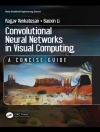This book addresses the stochastic modeling of telecommunication
networks, introducing the main mathematical tools for that purpose,
such as Markov processes, real and spatial point processes and
stochastic recursions, and presenting a wide list of results on
stability, performances and comparison of systems.
The authors propose a comprehensive mathematical construction of
the foundations of stochastic network theory: Markov chains,
continuous time Markov chains are extensively studied using an
original martingale-based approach. A complete presentation of
stochastic recursions from an ergodic theoretical perspective is
also provided, as well as spatial point processes.
Using these basic tools, stability criteria, performance measures
and comparison principles are obtained for a wide class of models,
from the canonical M/M/1 and G/G/1 queues to more sophisticated
systems, including the current ‘hot topics’ of spatial
radio networking, OFDMA and real-time networks.
Contents
1. Introduction.
Part 1: Discrete-time Modeling
2. Stochastic Recursive Sequences.
3. Markov Chains.
4. Stationary Queues.
5. The M/GI/1 Queue.
Part 2: Continuous-time Modeling
6. Poisson Process.
7. Markov Process.
8. Systems with Delay.
9. Loss Systems.
Part 3: Spatial Modeling
10. Spatial Point Processes.
表中的内容
Preface ix
Chapter 1. Introduction 1
1.1. Traffic, load, Erlang, etc1
1.2. Notations and nomenclature 7
1.3. Lindley and Bene¡s 10
1.4. Notes and comments 18
PART 1: DISCRETE-TIME MODELING 21
Chapter 2. Stochastic Recursive Sequences 23
2.1. Canonical space 24
2.2. Loynes’s scheme 30
2.3. Coupling 34
2.4. Comparison of stochastic recursive sequences 40
2.5. Notes and comments 43
Chapter 3. Markov Chains 45
3.1. Definition and examples 45
3.2. Strong Markov property 49
3.3. Classification of states 52
3.4. Invariant measures and invariant probability 60
3.5. Effective calculation of the invariant probability 75
3.6. Problems 77
3.7. Notes and comments 80
Chapter 4. Stationary Queues 83
4.1. Single server queues 84
4.2. Processor sharing queue 104
4.3. Parallel queues 106
4.4. The queue with S servers 117
4.5. Infinite servers queue 124
4.6. Queues with impatient customers 127
4.7. Notes and comments 146
Chapter 5. The M/GI/1 Queue 149
5.1. The number of customers in the queue 149
5.2. Pollacek-Khinchin formulas 153
5.3. Sojourn time 156
5.4. Tail distribution of the waiting time 158
5.5. Busy periods 160
PART 2: CONTINUOUS-TIME MODELING 167
Chapter 6. Poisson Process 169
6.1. Definitions 170
6.2. Properties 176
6.3. Discrete analog: the Bernoulli process 181
6.4. Simulation of the Poisson process 183
6.5. Non-homogeneous Poisson process 185
6.6. Cox processes 189
6.7. Problems 189
6.8. Notes and comments 191
Chapter 7. Markov Process 193
7.1. Preliminaries 193
7.2. Pathwise construction 195
7.3. Markovian semi-group and infinitesimal generator 199
7.4. Martingale problem 215
7.5. Reversibility and applications 220
7.6. Markov Modulated Poisson Processes 226
7.7. Problems 232
7.8. Notes and comments 234
Chapter 8. Systems with Delay 237
8.1. Little’s formula 237
8.2. Single server queue 241
8.3. Multiple server queue 245
8.4. Processor sharing queue 252
8.5. The M/M/ infinity queue 253
8.6. The departure process 254
8.7. Queuing networks 255
8.8. Problems 265
8.9. Notes and comments 268
Chapter 9. Loss Systems 271
9.1. General 271
9.2. Erlang model 274
9.3. The M/M/1/1 + C queue 276
9.4. The ‘trunk’ effect 279
9.5. Engset model 280
9.6. IPP/M/S/S queue 281
9.7. Generalized Erlang models 285
9.8. Hierarchical networks 289
9.9. A model with balking 294
9.10. A call center with impatient customers 301
9.11. Problems 303
9.12. Notes and comments 304
PART 3: SPATIAL MODELING 307
Chapter 10. Spatial Point Processes 309
10.1. Preliminary 309
10.2. Stochastic geometry 310
10.3. Poisson process 311
10.4. Stochastic analysis 326
10.5. Problems 336
10.6. Notes and comments 337
Appendix A. Mathematical Toolbox 339
A.1. Probability spaces and processes 339
A.2. Conditional expectation 347
A.3. Vector spaces and orders 352
A.4. Bounded variation processes 356
A.5. Martingales 363
A.6. Laplace transform 378
A.7. Notes and comments 379
Bibliography 381
Index 385
关于作者
Pascal Moyal is an associate Professor in the Applied Math. Department of Université de Technologie de Compigne, France.












